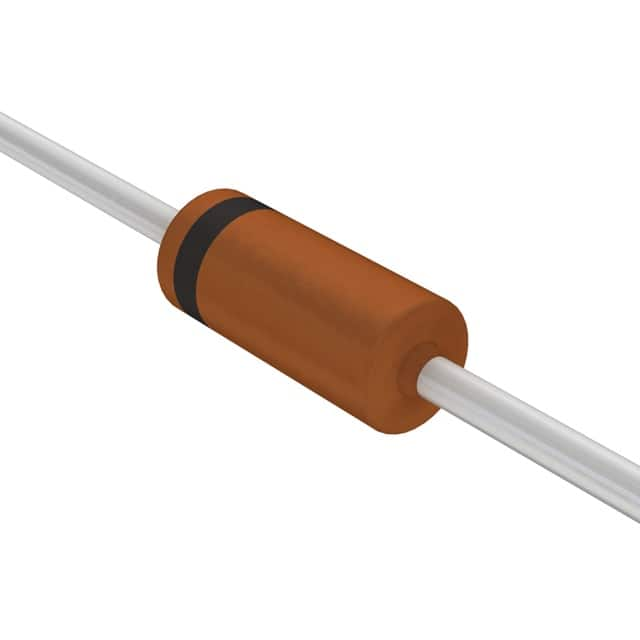BZX79-C3V0,133
Product Overview
Category
The BZX79-C3V0,133 belongs to the category of Zener diodes.
Use
It is commonly used for voltage regulation and protection in electronic circuits.
Characteristics
- Voltage: 3.0V
- Power Dissipation: 500mW
- Package: DO-35
- Tolerance: ±5%
- Operating Temperature Range: -65°C to +200°C
Packaging/Quantity
The BZX79-C3V0,133 is typically available in reels or bulk packaging with varying quantities depending on the supplier.
Specifications
- Zener Voltage: 3.0V
- Test Current: 5mA
- Maximum Reverse Leakage Current: 100nA
- Maximum Zener Impedance: 40Ω
Detailed Pin Configuration
The BZX79-C3V0,133 has two pins, anode, and cathode, which are identified by the polarity markings on the diode body.
Functional Features
- Precise voltage regulation
- Overvoltage protection
- Stable operation over a wide temperature range
Advantages
- Small form factor
- High reliability
- Low cost
Disadvantages
- Limited power dissipation capability
- Sensitivity to temperature variations
Working Principles
The BZX79-C3V0,133 operates based on the principle of the Zener effect, where it maintains a constant voltage drop across its terminals when it is reverse-biased and operated at or below its specified current.
Detailed Application Field Plans
The BZX79-C3V0,133 finds extensive use in various electronic applications such as: - Voltage regulators in power supplies - Overvoltage protection in communication systems - Signal clamping in audio and video equipment
Detailed and Complete Alternative Models
Some alternative models to the BZX79-C3V0,133 include: - BZX79-C2V7,133 (Zener Voltage: 2.7V) - BZX79-C3V3,133 (Zener Voltage: 3.3V) - BZX79-C3V6,133 (Zener Voltage: 3.6V)
In conclusion, the BZX79-C3V0,133 Zener diode offers precise voltage regulation and overvoltage protection in a compact package, making it suitable for a wide range of electronic applications.
Word Count: 287
기술 솔루션에 BZX79-C3V0,133 적용과 관련된 10가지 일반적인 질문과 답변을 나열하세요.
Sure, here are 10 common questions and answers related to the application of BZX79-C3V0,133 in technical solutions:
What is the BZX79-C3V0,133?
- The BZX79-C3V0,133 is a Zener diode with a voltage rating of 3.0V.
What are the typical applications of BZX79-C3V0,133?
- It is commonly used for voltage regulation, overvoltage protection, and voltage reference in various electronic circuits.
What is the maximum power dissipation of BZX79-C3V0,133?
- The maximum power dissipation is typically around 500mW.
What is the operating temperature range of BZX79-C3V0,133?
- The operating temperature range is usually between -65°C to +175°C.
How does BZX79-C3V0,133 provide voltage regulation?
- It operates in the reverse breakdown region, maintaining a nearly constant voltage across its terminals.
Can BZX79-C3V0,133 be used for overvoltage protection?
- Yes, it can be used to limit the voltage across a circuit to a safe level by conducting when the voltage exceeds its rated value.
What are the key electrical characteristics of BZX79-C3V0,133?
- These include its zener voltage, dynamic resistance, and leakage current.
Is BZX79-C3V0,133 suitable for low-power applications?
- Yes, it is commonly used in low-power circuits due to its moderate power dissipation capability.
Are there any specific layout considerations when using BZX79-C3V0,133?
- It is important to minimize lead lengths and ensure proper heat sinking to maintain its performance.
Where can I find detailed specifications and application notes for BZX79-C3V0,133?
- Detailed specifications and application notes can be found in the datasheet provided by the manufacturer or distributor of the component.
I hope these questions and answers are helpful for your technical solutions involving BZX79-C3V0,133! If you have any more questions, feel free to ask.


